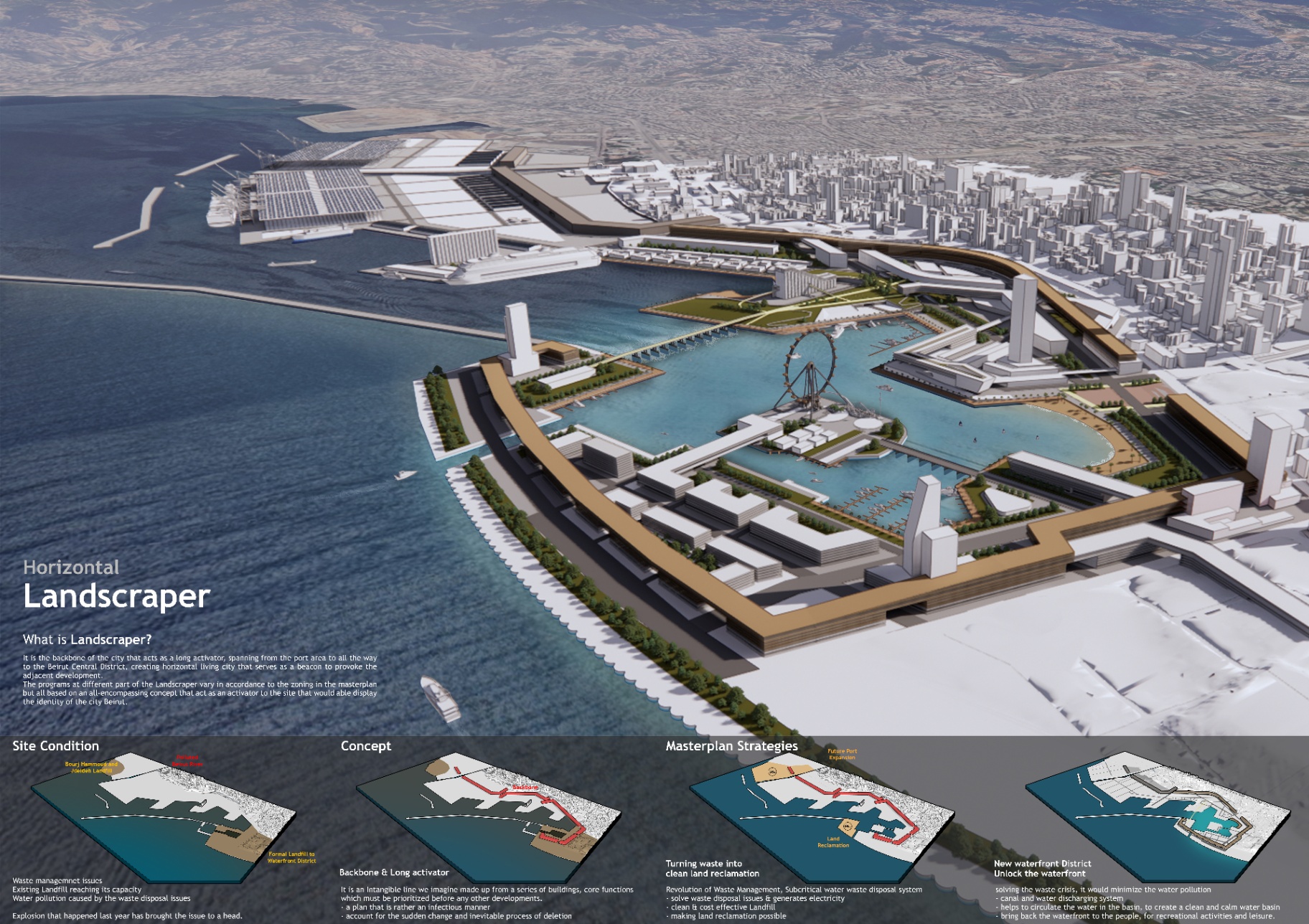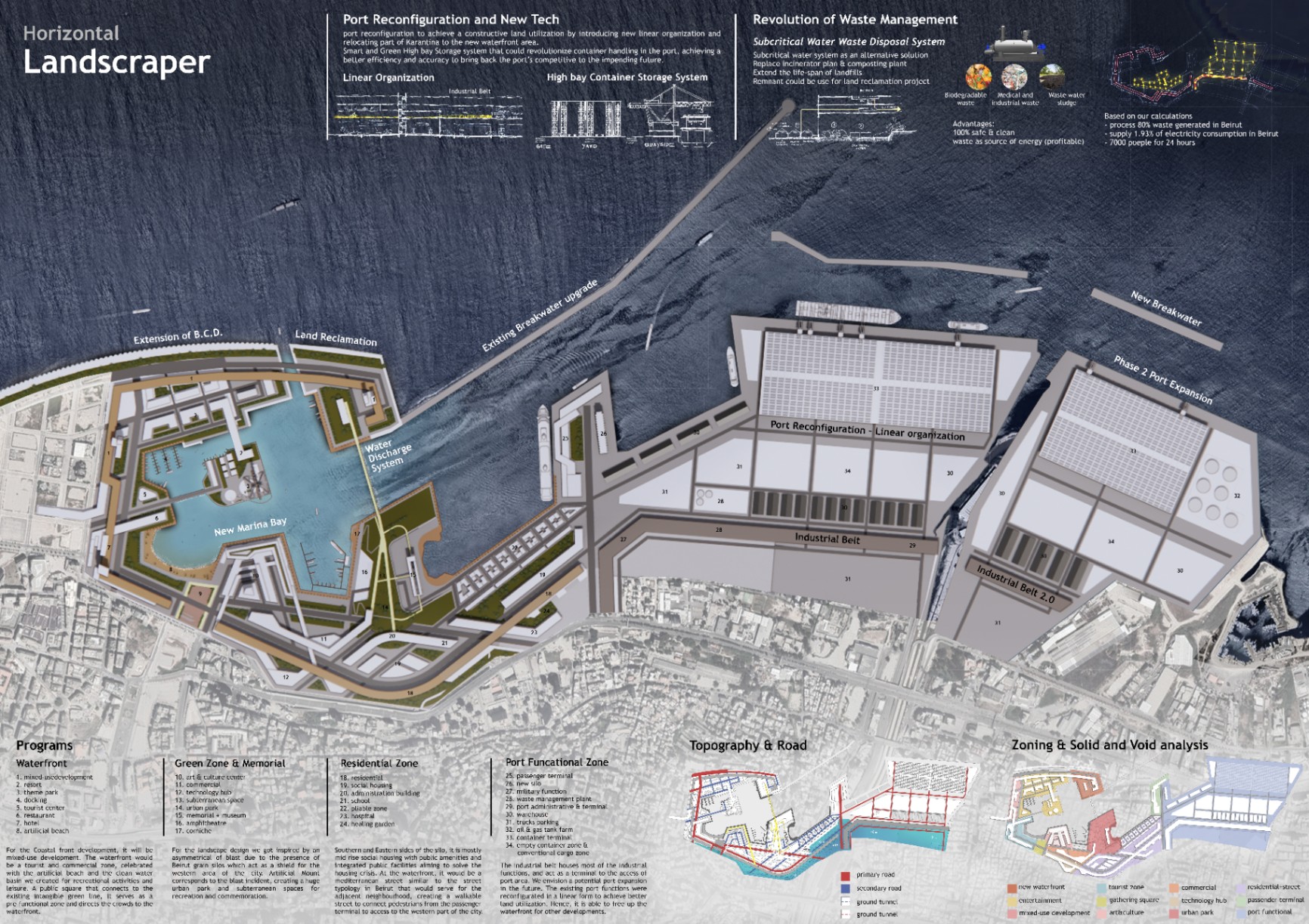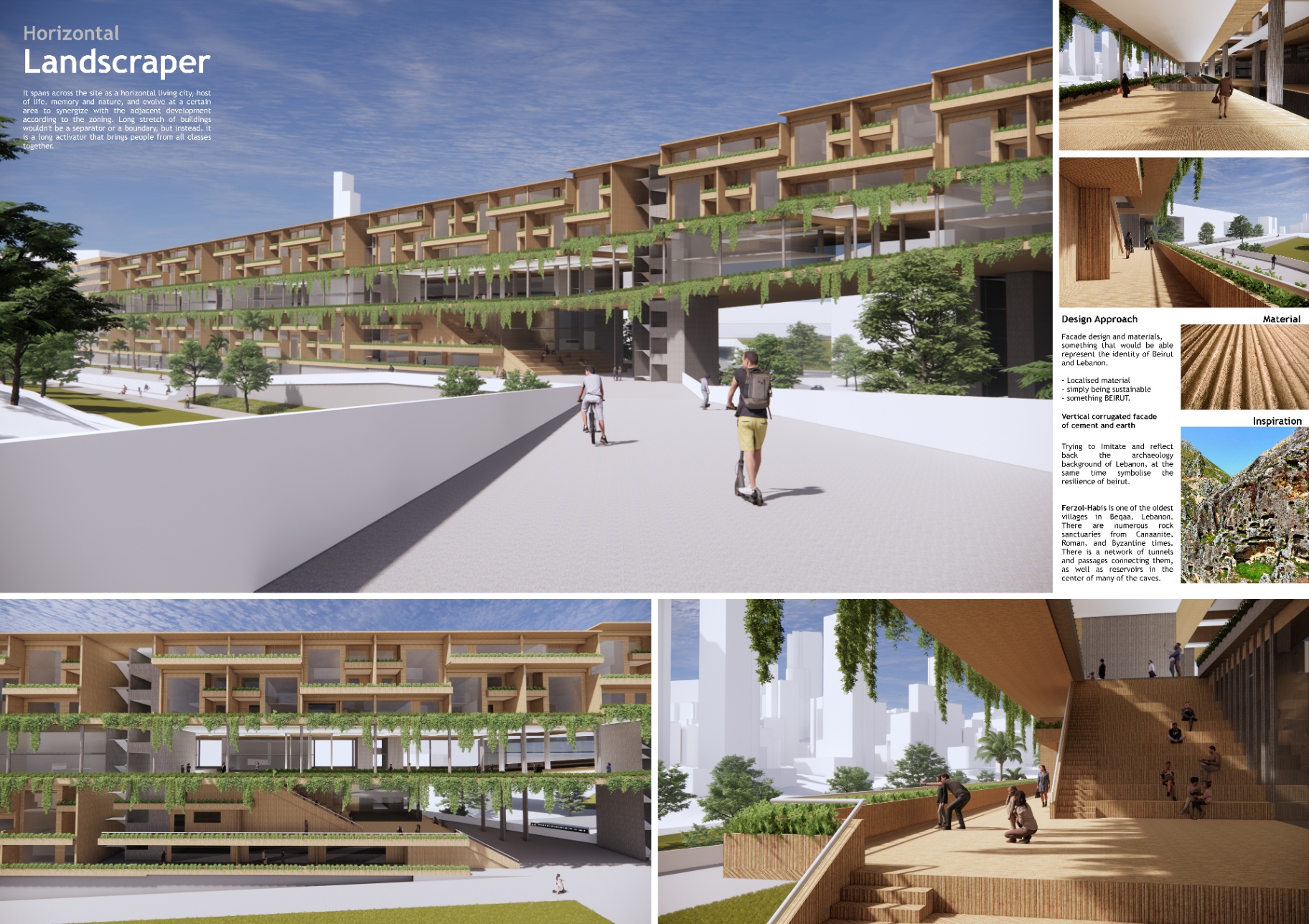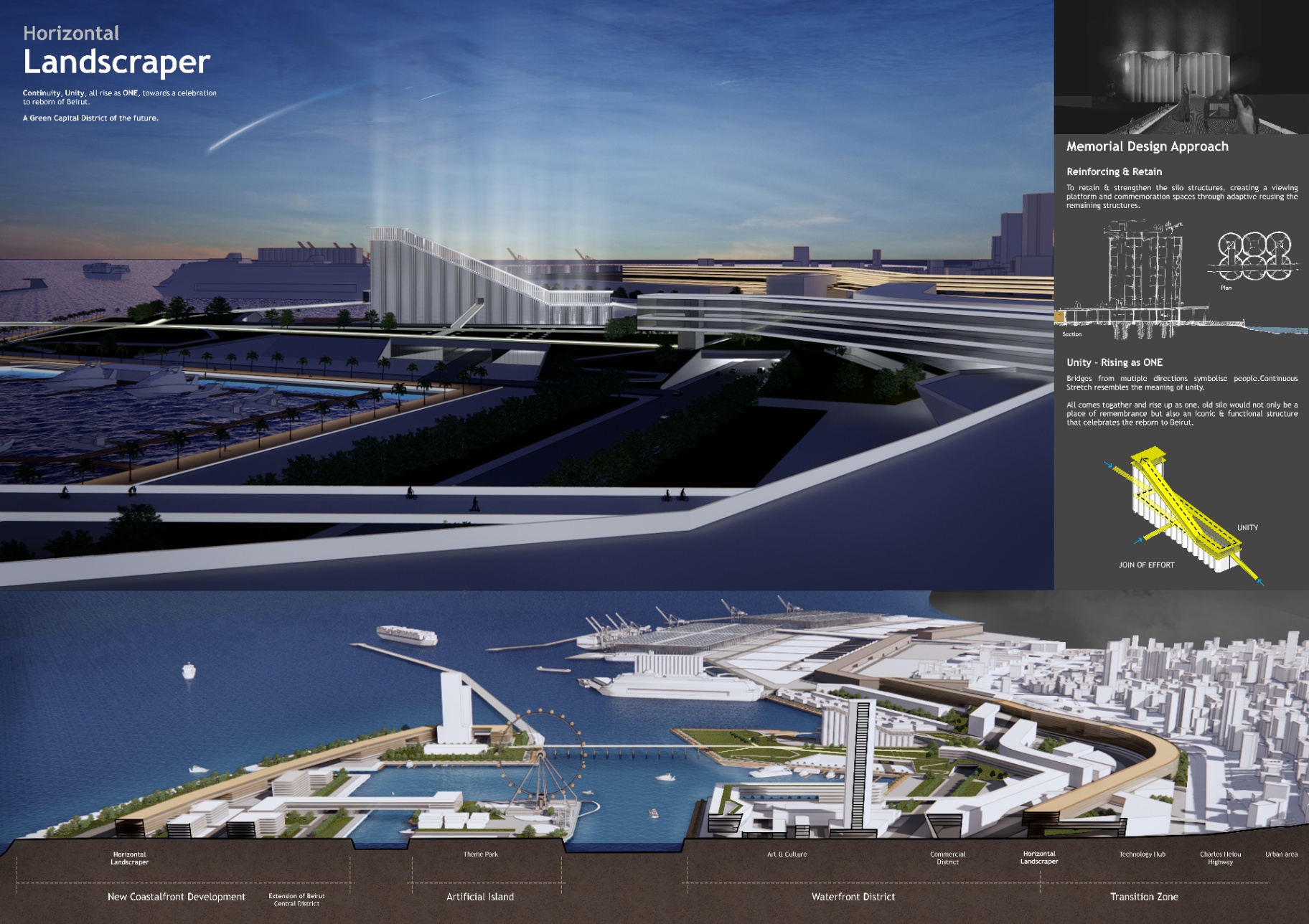Back
Beirut Horizontal Landscraper
Year: 2022
Category: Landscape & Urbanism
Skills: SketchUp, Enscape, Photoshop
Beirut port explosion sets an opportunity to rebuild the site as a new waterfront district & port city, hence we seek to exploit the full potential of the waterfront in the impending future. We envision creating a new waterfront district with a shoal and open bay surrounded by a horizontal living city. Horizontal Landscraper aims to create a horizontal living city that serves as a backbone and beacon to the city, synergizing the city and the new waterfront district.
What is Landscraper? Landscaper started as an intangible line we imagined, made up from series of building which consist of technology layers, infrastructure, administrative and municipal functions, the core functions for a city that must be prioritized before any other developments It is the backbone of the city that acts as a long activator, spanning from the port area to all the way to the Beirut Central District, creating horizontal living city that serves as a beacon to provoke the adjacent development. Basically this new building typology is able to free up the ground level and make more usable and living spaces at a higher elevation. The programs at different part of the Landscraper vary in accordance to the zoning in the masterplan but all based on an all-encompassing concept that act as an activator to the site that would able display the identity of the city Beirut. Why: Deterrence To Move Forward. Based on our analysis, we noticed that waste management issues have always been a critical issue to Lebanon since the civil war. To make the matter worse, the explosion that happened last year has brought the issue to a head. Improper waste management also gives rise to water pollution issues, not only at the port area, but also happens along the Beirut River which is mainly due to the waste issues of improper management.
1. Revolution to waste management: Subcritical water waste disposal system is able to disintegrate solid waste to produce organic matter, which can be used as fertilizer or to be used to produce methane gas to generate electricity for the new waterfront district and port functions. This would replace the on-going incinerator plan and waste disposal system. 2. Clean & Cost effective Landfill: Consequently, the remnants of these processes would go into landfill for port expansion and land reclamation at the waterfront. The system is able to significantly reduce the volume of waste making landfill last longer. 3. Making Land Reclamation Possible: In fact, this organic matter is environmentally friendly, when it is put into landfill or used for land reclamation it has minimal impact on the biodiversity and this makes future land reclamation and development possible. 4. Unlock the Waterfront: Through solving the waste crisis, it would minimize the water pollution caused by the waste issue. We would also like to propose a water canal and water discharging system. That would help to circulate the water in the basin to create a clean and calm water basin and bring back the waterfront to the people, for recreational activities and leisure.
It spans across the site as a horizontal living city, a host of life, memory, and nature, and evolves at some certain area to synergize with the adjacent development according to different zoning. The long stretch of buildings would not be a separator or a boundary, but instead, it is a long activator that brings people from all classes together.
Conclusion: A Green Capital District of the Future Through strengthening the backbone of the city we aim to synergize with the city and future development, to prepare the ground for future possibilities and at the same time enhance living, bringing new hope to the people through architectural intervention. In short, we are looking at a micro-city that is able to self-sustain, and eventually, become the green capital district of the future and provide future developments an impetus.
Zhi Hoe Kong
More by Zhi Hoe Kong
View profile



